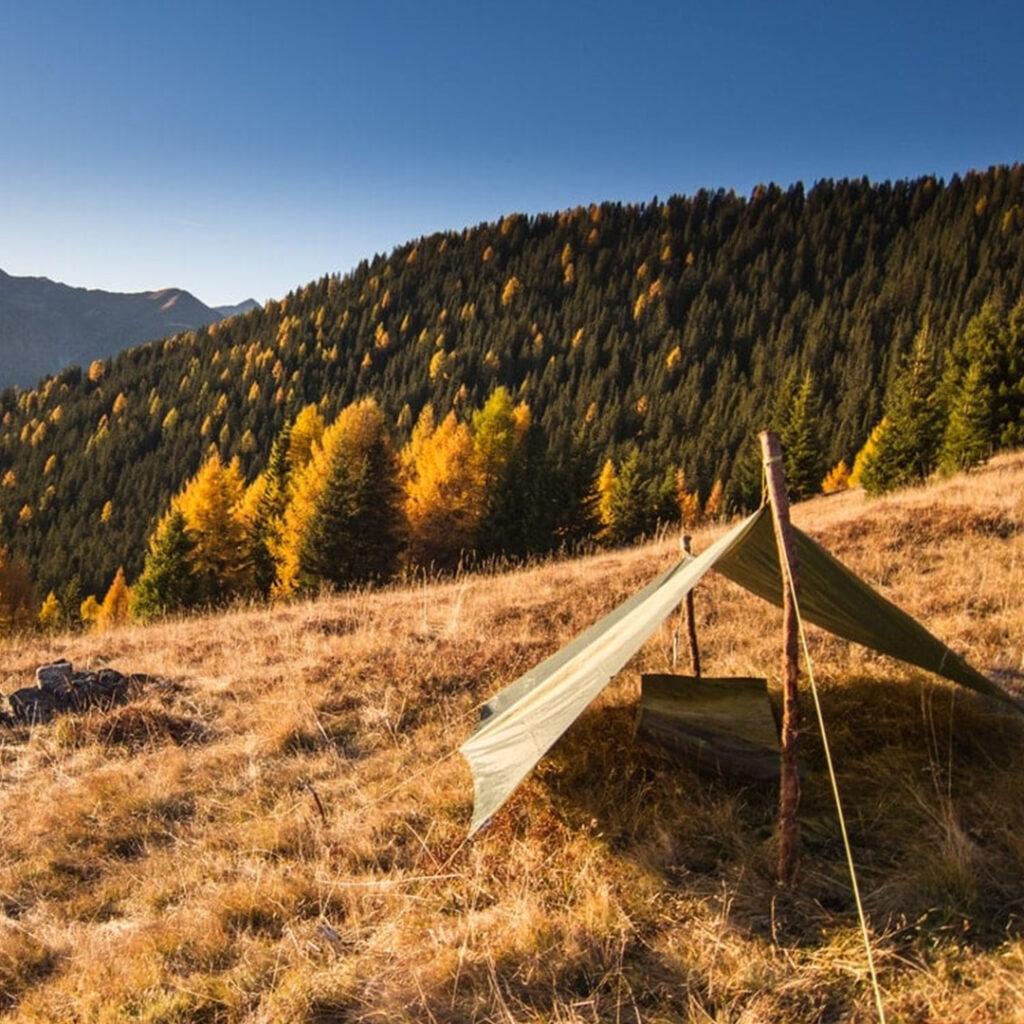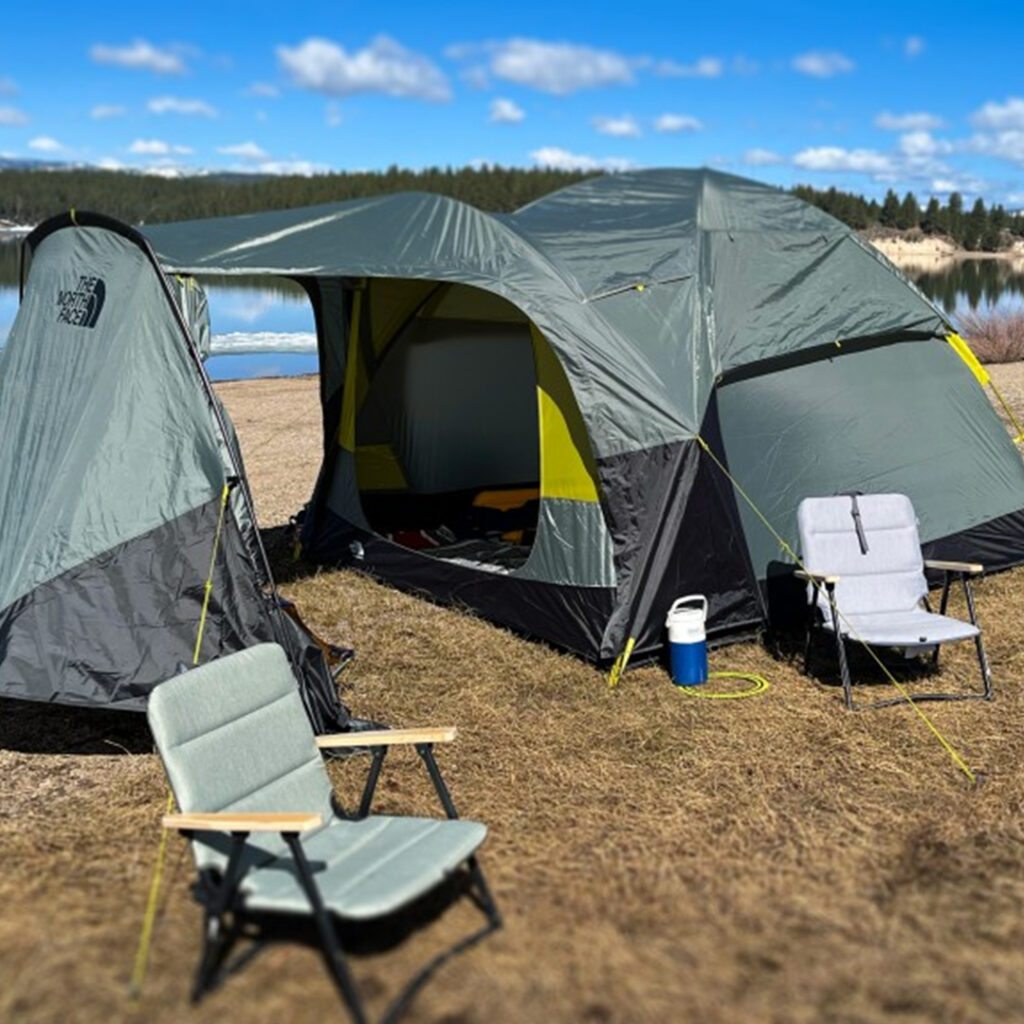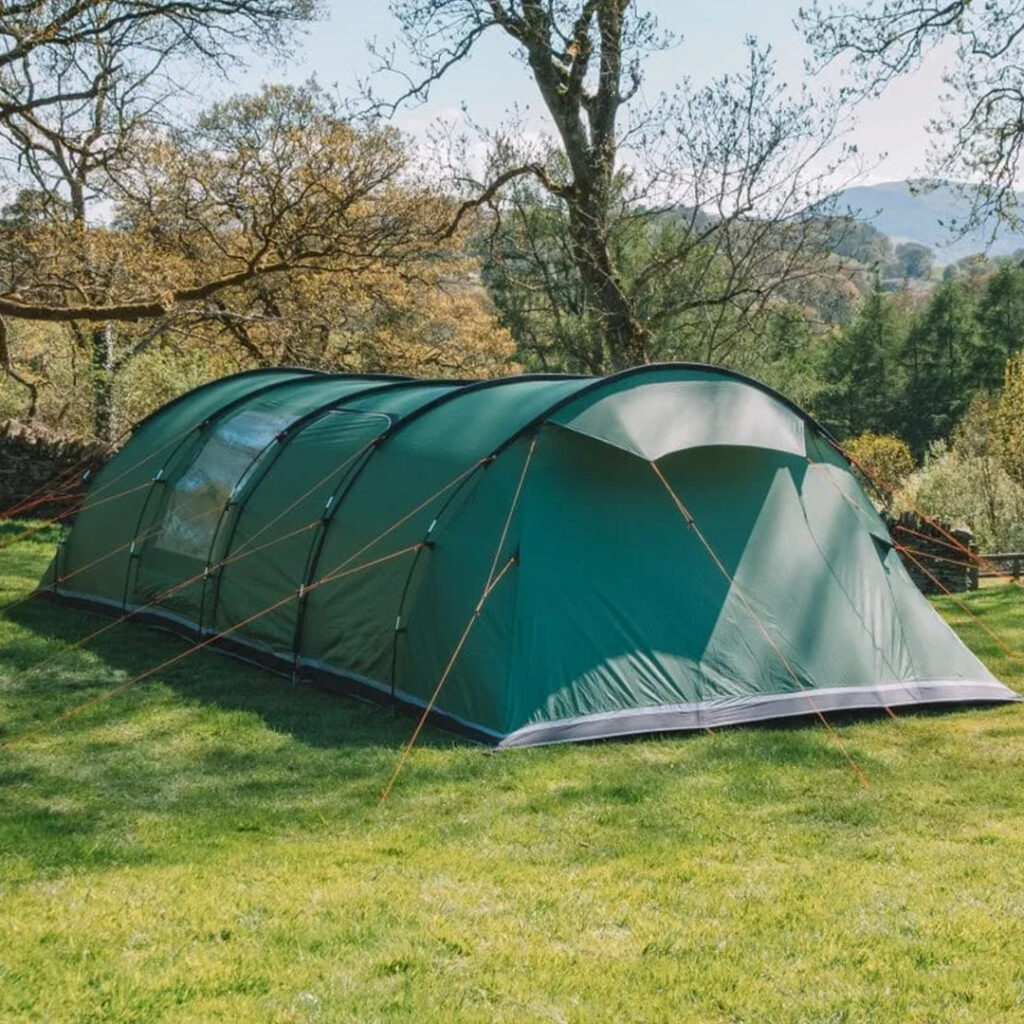How to make a Tarp Shelter Canopy without Trees ?
How to make a Tarp Shelter Canopy without Trees if you spend a lot of time outdoors. Hike, camp, you can even go on day trips with nothing more than a backpack; whatever you like to do in nature, there is an undeniable theme that can always come up in your parade.
How to set up a tarp shelter is your best need for survival. Extreme weather conditions can kill in a couple of hours if you don’t have some safe home to protect you from the weather.
That is rain. It will get within the means of a wonderfully smart hike, whether or not you recognize it’s attending to happen or not.

It would be best if you had shelter while passing by so you don’t get sick or end up soaking your clothes when you get back to the starting point, and when there are no trees around to hang the tarp, it gets tricky.
We’ll tell you How to make a Tarp Shelter Canopy without Trees in an instant while explaining which the best type of canvas is for the occasion. You can install your tarp anywhere if you have the right equipment.
Therefore what are you able to do once there are not any trees to hold your canvas? Let’s go over the list of everything you need to know. Don’t let the lack of trees ruin your camping trip.
How do you make a canvas canopy?
How to make a shade canopy out of a tarp.
- Prepare the area.
- Place the posts in the corners.
- Tie the corners.
- Secure the posts to the ground.
- Attach the center post.
- Secure the canopy.
- Decorate.
What type of canvas do you need?
How to use tarps for camping the best tarp for the job will be a polyethylene tarp. You’ll see us say this all the time here, but polyester is the best shelter material because of its natural waterproof qualities.
Even once a poly tarp is finished with an extra waterproof coating, that is only for a smart life. Polyethylene tarps area unit significantly smart for these shelters for many further reasons:
Lighter in weight: Polyethylene tarps are significantly lighter in weight and easy to transport, so you will not increase your burden when you consider the other things required for the work.
Tear Resistant: Things will get tough when you build this, especially if it’s your first time. You can use sticks from nature to help propel the mat, so we want it to be sturdy.
Naturally Mold Resistant: whereas mold will eventually get through any canvass left during a heat, dark place, it’s far more-tough for it to urge through the synthetic resin. It makes it fantastic to use over and over again for this purpose.
Naturally Waterproof: Even if your waterproof coating fails on the outside, you can still wear it because the rain will run anyway.
Materials | How to make a Tarp Shelter Canopy without Trees
It is a simple haven that you should make with the items you already carry with you when you head out into the wild. How to make a Tarp Shelter Canopy without Trees let’s take a glance at whatever you need.
- Carp stakes
- Paracord
- Nearby tent poles
- Elastic cables and elastic balls
- Hammock cover or some kind of temporary floor
That is really all you need. It will be very simple for us from start to finish, so buckle up and make sure you pay attention to detail. And just so you know, we’ll show you how to make two separate shelters out of this.
Step-by-step Guide (first method)
Called the diamond frame, this one has an entry point, compared to method two that we’ll show you in a moment. It can be easily set up but is often considered the more complicated process of the two.
1. Place Your Pole
Whether it’s a tent pole or a really cool stick you found in the woods, it’s time to put it on the ground. It will serve as the entrance to your temporary diamond-framed survival shelter.
2. Prepare Your Tarp
Now is the time to place the tarp over the post. You want one edge of this to rest directly on top of the post, while the rest will flow to the sides. Use this time to see roughly where your grommets will need to hold the stakes in the ground.
3. First Step | How to make a Tarp Shelter Canopy without Trees
Use the first stake in your tent and drive it through one of the grommets on the side of your tent. You should have about three or four buttonholes in total. Lay them on the ground so that you have a ruler on the side of your tent.
4. Second Step | How to make a Tarp Shelter Canopy without Trees
Now go to the front of your makeshift tent and lean the leading edge over the pole/opposite again.
Pull down the other side of the mat to touch the ground and look at it to make sure the post is in the direct center. Hold the grommet in place and drive your next stake through it. It’s okay if the canvas falls off the pole now.
5. Bets Back
Head to the rear of the canvas and drive your stakes into the bottom. They must be in a straight line, and they must be easy to place; the sides of your tent should already be taut from how you put them on the ground. At the end of this, three sides will be wholly stuck into the ground.
6. Location of Poles
Go back and make sure the post is positioned correctly. Whereas it does not have a full-frame to stay too, it ought to await an adequate degree.
You may notice the post slowly sinking into the ground due to the force of the opening pushing it on, but that’s perfectly fine. Just reposition slightly if necessary. After all, this is only temporary.
Step-by-step Guide (second method)
It is what is called an A-frame, which can provide a bit less coverage but is also easier to fit without having to make it perfect. We’ll see.
1. Secure the Poles | How to make a Tarp Shelter Canopy without Trees
If you have tent poles with you, they better be thick and up to the task. Measure the overall length of your tarp and position the posts about a foot outside of that range altogether. Ensure the posts are secure in the ground, even if that means this shelter is lower than the floor you would like.
2. Run Your Paracord
It is perhaps the longest part of the process because whether you don’t have enough slack and the poles stick together, or you have too much and your tent sags. Take your time here, readjust your posts, and get it right until the line is reasonably tight.
3. Hang Your Canvas | How to make a Tarp Shelter Canopy without Trees
It is like making a house of cards; you want to be careful. Hang the tarp so that it is even on both sides and give it a little tug, so you know it won’t fall on you in the middle of the night.
4. Boost Your Bets
It would just fly if we didn’t anchor it. Use stakes near the grommets, about three inches apart overall. It will depend on the length of the bungee cords, so adjust the distance as needed.
5. Bungee Cables
Time to secure the tarp with the elastic cables. Thread the hooks through the grommets and the others around the stakes, and see if this will withstand the wind by fanning the sides with a blanket or something else in your arsenal.
If all goes well, you will have a moderately sturdy shelter that you can use for the night.
Tip: If you find that your shelter has a problem with too many bungee cords, you can always use one in each of the four corners and finish it.
Does this app ruin the canvas?
As long as you hang it up properly, it won’t hurt your tarp any more than any other app. Just because we don’t have any trees to cling to doesn’t mean you’re stretching the tarp outside of regular use.
You can still expect your tarp to last three to five years, and with proper care, it could even last longer. The biggest issue here, since we use it to stay dry, is making sure we air dry it properly before putting it away.
When you get home, you should let it dry in the sun and then go over it with a cotton cloth, specifically around the washers, before putting it away. Mold is the enemy and ruins more tarps than you think, especially in the camping space and outdoors.
Even if it has a polyethylene tarp, which is resistant to mold, it does not mean that it is waterproof. When a tarp is stored for weeks or months with moisture along with it, mold will continue to grow; it will just take longer to get through.
The Shelter at Any Time
How to make a Tarp Shelter Canopy without Trees even if you don’t have the power of nature close by, you can pack the stakes and make the most of whatever situation you find yourself in.
How to make a Tarp Shelter Canopy without Trees takes a few minutes to set up at most, so you can take some control in any adverse situation in which you find yourself. If the tarp is challenging to install the first time, don’t worry. It will get a little better each time you set it up.
Each time you set it up, the bets/reference lines will be marked more. Once you figure out what you are doing, it is relatively easy/fast. If you have everything ready for when you arrive, it shouldn’t take more than a couple of minutes.
All the tarp setup for rain and tarp poles work starts to pay off once you actually set up a tarp shelter for camping.




